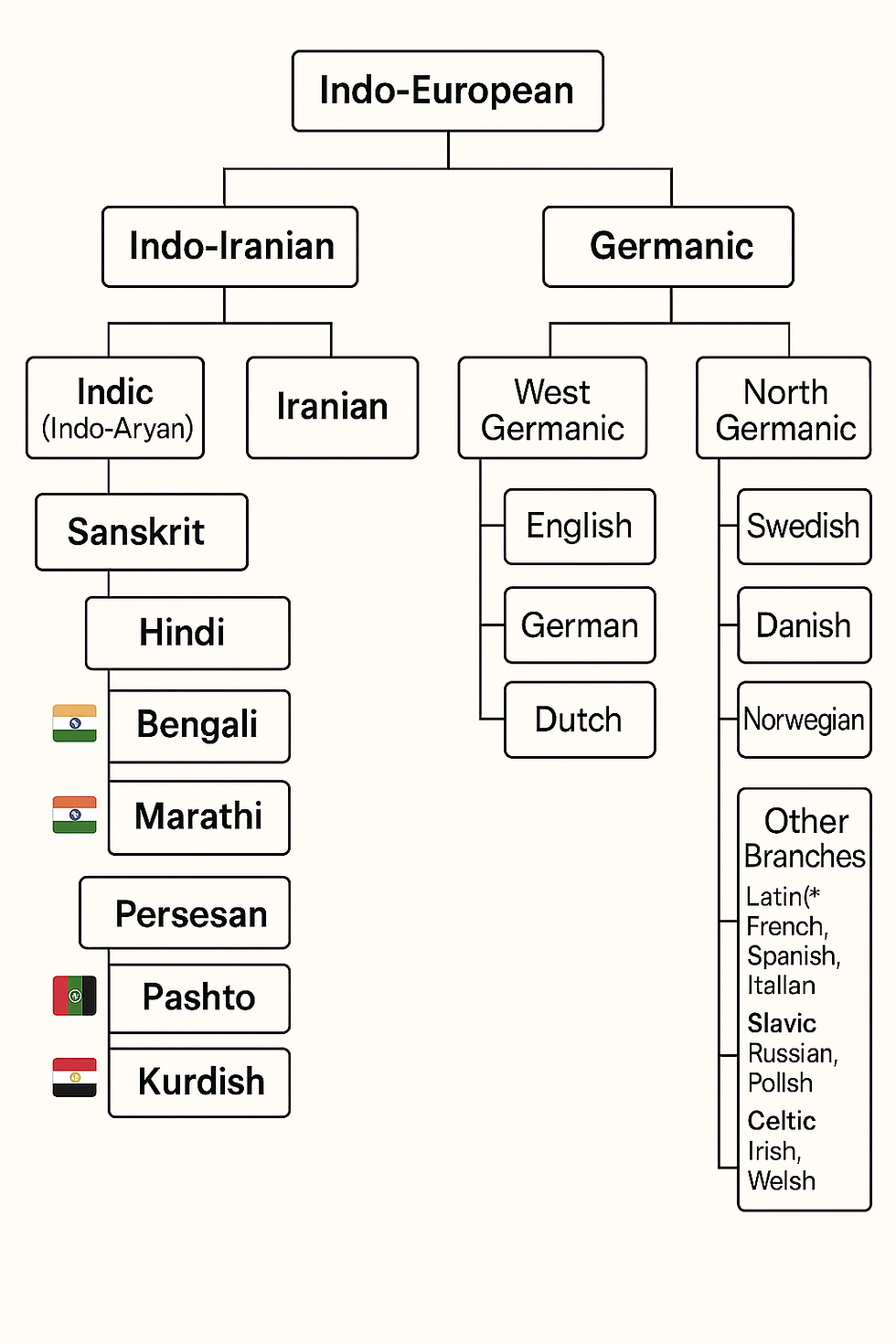The First Step : Understanding The Major Differences and Similarities Between German and English
- Admin Abyaas
- Aug 29
- 2 min read
When you start learning German, the first thing you’ll notice is how familiar yet different it feels compared to English. This is not a coincidence — both belong to the Indo-European language family, which also includes many of the world’s major languages, from Sanskrit and Hindi to French and Russian.

As you can see, English and German are “siblings” under the West Germanic group, while Sanskrit is a much older cousin from the Indo-Aryan side. All of them go back to the same great-grandparent: Proto-Indo-European — the ancient language spoken thousands of years ago. This shared heritage explains why German and English have so many similarities, but also why they developed their own unique features over time.
Watch this Video to understand the Similarities and Differences
Here are four of the most important similarities and differences you should know:
German and English Has Same Script, But Different Pronunciation
Both languages use the Latin alphabet (A–Z). But in German, many letters sound different:
V → pronounced as F (Vater = father).
W → pronounced as V (Wasser = water).
Z → pronounced as ts (Zeit = time).
Umlauted vowels (ä, ö, ü) change the sound and meaning of words.
ß → sharp s, e.g., Straße (street).
So while you already recognize the letters, you must train your ear and tongue for German pronunciation.
Gendered Nouns — and Changing Articles & Verbs
English nouns are neutral (the table, the book). German nouns have three genders:
Masculine → der Tisch (the table)
Feminine → die Lampe (the lamp)
Neuter → das Buch (the book)
This isn’t just about memorizing articles (der/die/das). Gender also influences:
Articles (ein/eine for “a”)
Adjective endings (ein schöner Tag = a beautiful day)
Verb forms in some cases
That means when you learn a new noun in German, you must learn its article too.
Capitalization Rules
In English, we capitalize only proper nouns (India, John, London).In German, every noun is capitalized, no matter where it appears in the sentence:
Das Buch ist interessant. (The book is interesting.)
Ich habe eine Frage. (I have a question.)
This makes German text look more formal and structured, but also helps learners spot nouns quickly while reading.
Formal and Informal “You”
English uses only “you” for everyone. German distinguishes between:
du → informal (friends, family, children)
Sie → formal (strangers, elders, professionals)
This is very similar to Hindi and Telugu, where we also change pronouns depending on respect and closeness (tu/tum/aap in Hindi or nu/vu/meeru in Telugu).
So Indian learners often find this part familiar — unlike native English speakers, who need extra practice here.
Final Thoughts
German and English share the same alphabet, but their rules differ in important ways: pronunciation, noun genders, capitalization, and formality. For Indian learners, some differences (like formal vs informal “you”) already feel natural, thanks to similarities with Hindi or Telugu.
At Abyaas Institute, we focus on these key differences early so learners avoid common mistakes and build confidence in both speaking and writing.




Comments